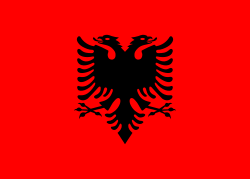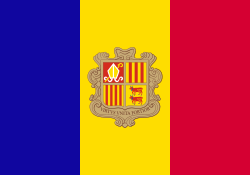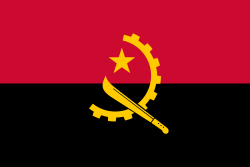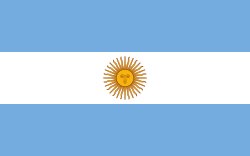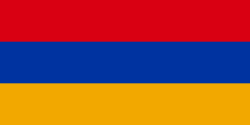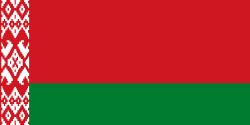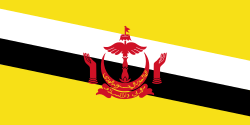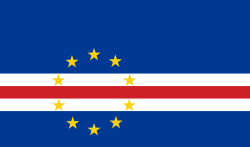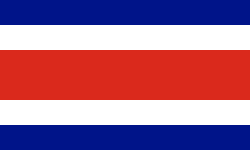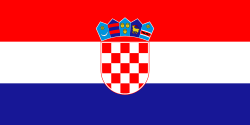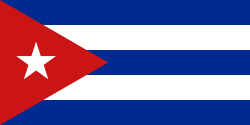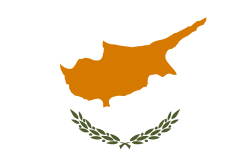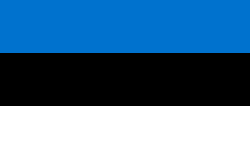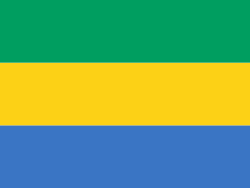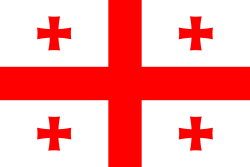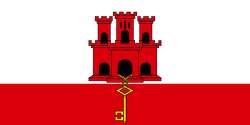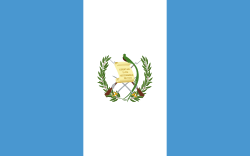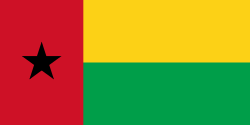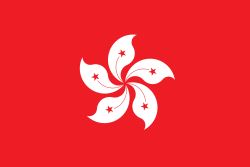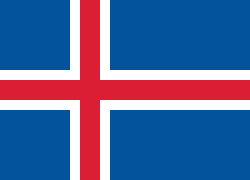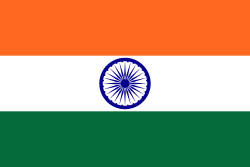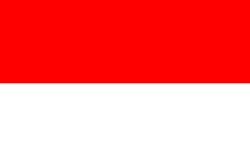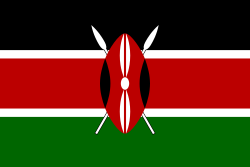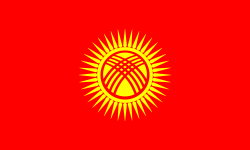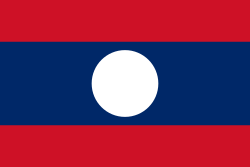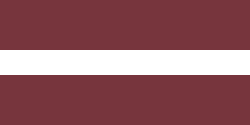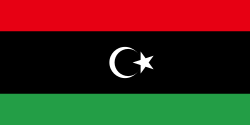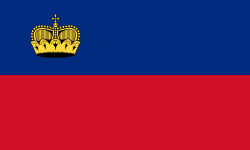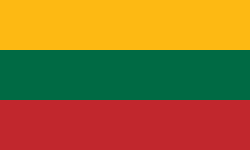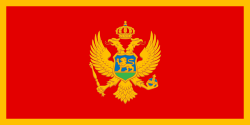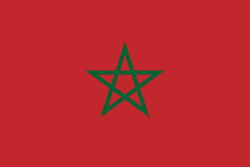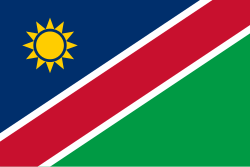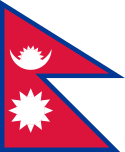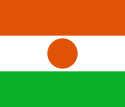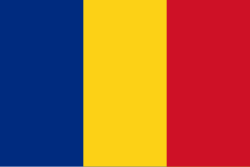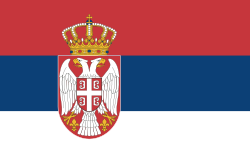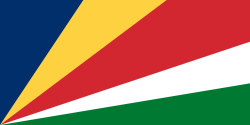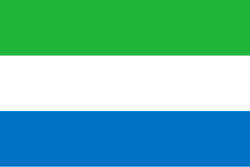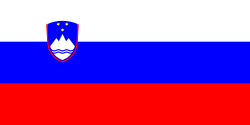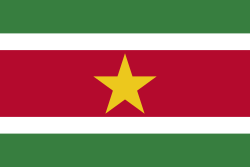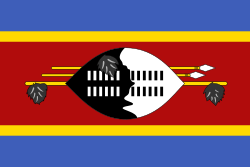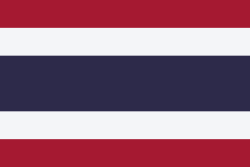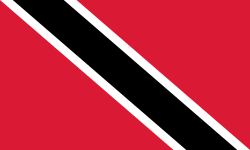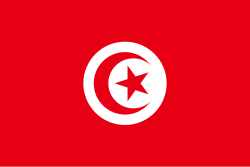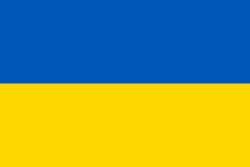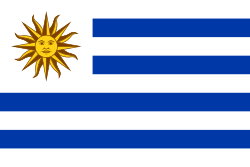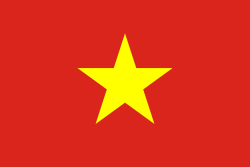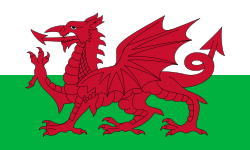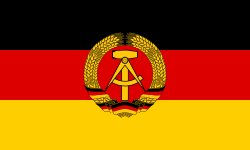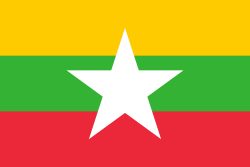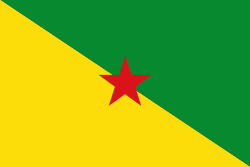Liste over FIFA-landekoder
FIFA uddeler en landekode på tre bogstaver (mere korrekt kaldet et trigram) til hver enkelt af dets medlemmer og til ikke-medlemslande. Disse er de officielle koder, som bruges af FIFA og dets kontinentale conføderationer (AFC, CAF, CONCACAF, CONMEBOL, OFC og UEFA) asom navneforkortelser af lande og uselvstændige områder, i officielle konkurrencer.
FIFA medlemskoder
Der er 209 FIFA medlemmer, som hver har deres egen unikke landekode.[1]
|
|
|
|
Ikke-FIFA medlemskoder
Følgende koder henviser til lande eller uselvstændige områder, der for øjeblikket ikke er medlemmer af FIFA, men hvis koder enten vises i FIFA resultatsdatabase, eller benyttes jævnligt af konfederationens hjemmesider.
|
Forældede landekoder
Følgende koder er forældede fordi et land er ophørt med at eksistere, har ændret sit navn, ændret sin kode eller er blevet en del af et andet land.
|
|
|
Referencer
- ^ "Associations". FIFA.com. Arkiveret fra originalen 23. juli 2006. Hentet 26. juli 2006.
Medier brugt på denne side
Flag of Albania
Flag of Austria with the red in the Austrian national colours which was official ordered within the Austrian Armed Forces (Bundesheer) in the characteristic “Pantone 032 C” (since May 2018 the Red is ordered in the characteristic “Pantone 186 C”.)
| Flag of Bolivia* | |
|---|---|
| country | Template:I18n/Republic of Bolivia |
| anvendes af | Bolivia |
| fra | 1851 |
| til | Present |
| oprettet af | Government of Bolivia |
| format | 15:22 |
| form | rectangular |
| farver | rød, gul, grøn
flag has 3 horizontal stripes |
| other characteristics | A horizontal tricolor of red, yellow and green. |
Flag of Burkina Faso
Flag of Canada introduced in 1965, using Pantone colors. This design replaced the Canadian Red Ensign design.
Det er let at give dette billede en kant
Chinese Taipei Olympic Flag. According to the official website of Chinese Taipei Olympic Committee, Blue Sky(circle) & White Sun(triangles) above the Olympic rings is neither the National Emblem of the Republic of China, nor the Party Emblem of Kuomintang (KMT), but a design in between, where the triangles do not extend to the edge of the blue circle, as registered at International Olympic Committee in 1981 and digitally rendered in 2013. Besides, the blue outline of the five-petaled plum blossom is broader than the red one. Moreover, the CMYK code of the blue one and the Blue Sky & White Sun is "C100-M100-Y0-K0", and different from the Olympic rings (C100-M25-Y0-K0). Note that it's the only version recognized by IOC.
The national flag of the Democratic Republic of the Congo. Created according to the 2006 constitution : Son emblème est le drapeau bleu ciel, orné d’une étoile jaune dans le coin supérieur gauche et traversé en biais d’une bande rouge finement encadrée de jaune. (Its symbol is a sky blue flag, decorated with a yellow star in the upper left corner and crossed in the diagonal by a red strip with thin yellow borders) It seems to be identical, except for a lighter field hue, to the 1966–1971 flag.
Det er let at give dette billede en kant
Forfatter/Opretter: See File history below for details., Licens: CC0
The Flag of Dominica.
The flag of the Dominican Republic has a centered white cross that extends to the edges. This emblem is similar to the flag design and shows a bible, a cross of gold and 6 Dominican flags. There are branches of olive and palm around the shield and above on the ribbon is the motto "Dios,Patria!, Libertad" ("God, Country, Freedom") and to amiable freedom. The blue is said to stand for liberty, red for the fire and blood of the independence struggle and the white cross symbolized that God has not forgotten his people. "Republica Dominicana". The Dominican flag was designed by Juan Pablo Duarte, father of the national Independence of Dominican Republic. The first dominican flag was sewn by a young lady named Concepción Bona, who lived across the street of El Baluarte, monument where the patriots gathered to fight for the independence, the night of February 27th, 1844. Concepción Bona was helped by her first cousin María de Jesús Pina.
Flag of the Ivory Coast, written by Jon Harald Søby, modified by Zscout370. The colors match to what is reported at http://fotw.vexillum.com/flags/ci.html.
Flag of the Ivory Coast, written by Jon Harald Søby, modified by Zscout370. The colors match to what is reported at http://fotw.vexillum.com/flags/ci.html.
Flag of Ethiopia
Finlands flag
Flag of Gibraltar
The national and official state flag of Haiti; arms obtained from File:Coat of arms of Haiti.svg. The civil flag can be found at here.
bendera Indonesia
Flag of Iran. The tricolor flag was introduced in 1906, but after the Islamic Revolution of 1979 the Arabic words 'Allahu akbar' ('God is great'), written in the Kufic script of the Qur'an and repeated 22 times, were added to the red and green strips where they border the white central strip and in the middle is the emblem of Iran (which is a stylized Persian alphabet of the Arabic word Allah ("God")).
The official ISIRI standard (translation at FotW) gives two slightly different methods of construction for the flag: a compass-and-straightedge construction used for File:Flag of Iran (official).svg, and a "simplified" construction sheet with rational numbers used for this file.
Flag of Jamaica. “The sunshine, the land is green, and the people are strong and bold” is the symbolism of the colours of the flag. GOLD represents the natural wealth and beauty of sunlight; GREEN represents hope and agricultural resources; BLACK represents the strength and creativity of the people. The original symbolism, however, was "Hardships there are, but the land is green, and the sun shineth", where BLACK represented the hardships being faced.
Flag of Laos
Flag of Liechtenstein
Flag of Maldives. The colours used are Pantone 186 C for red and Pantone 348 C for green.
Flag of Mauritania, adopted in 2017. The National Assembly added red stripes to the top and bottom edges to represent “the blood shed by the martyrs of independence”.
Flag of Namibia
Ulster Banner is a heraldic banner taken from the former coat of arms of Northern Ireland. It was used by the Northern Ireland government in 1953-1973 with Edwardian crown since coronation of Queen Elizabeth II, based earlier design with Tudor Crown from 1924. Otherwise known as the Ulster Flag, Red Hand of Ulster Flag, Red Hand Flag.
Flag of Papua New Guinea
Colours: Pantone 186 C for red and 116 C for yellow
Flag of Portugal, created by Columbano Bordalo Pinheiro (1857–1929), officially adopted by Portuguese government in June 30th 1911 (in use since about November 1910). Color shades matching the RGB values officially reccomended here. (PMS values should be used for direct ink or textile; CMYK for 4-color offset printing on paper; this is an image for screen display, RGB should be used.)
Flag of Senegal
The flag of Slovenia.
- "The construction sheet for the coat of arms and flag of the Republic of Slovenia
- is issued in the Official Gazette Uradni list Republike Slovenije #67, 27 October 1994
- as the addendum to the Law on the coat of arms and flag."
Used color: National flag | South African Government and Pantone Color Picker
| grøn | rendered as RGB 0 119 73 | Pantone 3415 C |
| gul | rendered as RGB 255 184 28 | Pantone 1235 C |
| rød | rendered as RGB 224 60 49 | Pantone 179 C |
| blå | rendered as RGB 0 20 137 | Pantone Reflex Blue C |
| hvid | rendered as RGB 255 255 255 | |
| sort | rendered as RGB 0 0 0 |
Flag of South Sudan (originally of the Sudan People's Liberation Army/Movement)
Det er let at give dette billede en kant
The national flag of Kingdom of Thailand; there are total of 3 colours:
- Red represents the blood spilt to protect Thailand’s independence and often more simply described as representing the nation.
- White represents the religion of Buddhism, the predominant religion of the nation
- Blue represents the monarchy of the nation, which is recognised as the centre of Thai hearts.
Trinidad og Tobagos flag
The Star of India Red Ensign
Flag of Serbia and Montenegro, was adopted on 27 April 1992, as flag of Federal Republic of Yugoslavia (1992-2003).
Det er let at give dette billede en kant
Flag of Egypt (1958-1972) and flag of Syria (1958-1961) in the United Arab Republic. It also became the official flag of Syria since 1980.
Flag of the Socialist Federal Republic of Yugoslavia (1946-1992).
The design (blazon) is defined in Article 4 of the Constitution for the Republic of Yugoslavia (1946). [1]
Flag of São Tomé and Príncipe
Flag of Rhodesia (11 November 1968 – 31 May 1979) and Zimbabwe Rhodesia (1 June – 1 September 1979).
Forfatter/Opretter: Jfblanc, Licens: CC BY-SA 4.0
Flag of Martinique from May 2019 to November 2021.
Flag of the Turks and Caicos Islands
The flag of Aruba
Flag of former North Vietnam (from 1955 until reunification with South Vietnam in 1976)
Flag of the People's Republic of Congo between 1 January 1970 - 10 June 1991
Flag of the Gold Coast. Data from http://www.fotw.us/flags/gh_col.html .
Flag of Suriname, constituent country of the Kingdom of the Netherlands (1954-1974), from its adoption in 1959 until the achievement of independence on 25 November 1975, on which date the flag was changed to its current form.
Anguillas flag (taget i brug den 30. maj 1990) - RGB farverne, 1:2 dimensionerne og konstruktionsdetajlerne baseret delvist på skabelonerne: Flag of Anguilla – A Brief History
Forfatter/Opretter: Nightstallion, Licens: CC0
Flag of French Polynesia
This is "Saint Patrick's saltire", the third component of the Union Flag. It represents Ireland and is called "Saint Patrick's cross/saltire", though whether this was originally an authentic symbol of Saint Patrick is historically quite doubtful.
Flag of Serbia and Montenegro, was adopted on 27 April 1992, as flag of Federal Republic of Yugoslavia (1992-2003).
State Flag of Peru.
Forfatter/Opretter: Sodacan, Licens: CC BY-SA 4.0
Flag of British Guiana (1919-1955)
Flag of Southern Rhodesia (1924–1964).
Ulster Banner is a heraldic banner taken from the former coat of arms of Northern Ireland. It was used by the Northern Ireland government in 1953-1973 with Edwardian crown since coronation of Queen Elizabeth II, based earlier design with Tudor Crown from 1924. Otherwise known as the Ulster Flag, Red Hand of Ulster Flag, Red Hand Flag.
Unofficial local flag of Guadeloupe, from the xrmap flag collection 2.7. Original from FOTW
Chinese Taipei Olympic Flag. According to the official website of Chinese Taipei Olympic Committee, Blue Sky(circle) & White Sun(triangles) above the Olympic rings is neither the National Emblem of the Republic of China, nor the Party Emblem of Kuomintang (KMT), but a design in between, where the triangles do not extend to the edge of the blue circle, as registered at International Olympic Committee in 1981 and digitally rendered in 2013. Besides, the blue outline of the five-petaled plum blossom is broader than the red one. Moreover, the CMYK code of the blue one and the Blue Sky & White Sun is "C100-M100-Y0-K0", and different from the Olympic rings (C100-M25-Y0-K0). Note that it's the only version recognized by IOC.
The flag of Guam, courtesy an e-mail from the author of xrmap. Modifications by Denelson83.
The flag of Curaçao is a blue field with a horizontal yellow stripe slightly below the midline and two white, five-pointed stars in the canton. The geometry and colors are according to the description at Flags of the World.
Flag of French Guiana. Adopted as official flag by the General Council on January 29, 2010.
Flag of Rwanda. The flag ratio is 2:3 with the stripes being 2:1:1. Colors are the following officially: Pantone 299 C 2X (blue), RAL 6029 (green), RAL 1023 (yellow) and RAL 1003 (golden yellow). (As of 03/08/2010, the only color used is the Pantone 299 C, which is from here. The rest of the colors are RAL shades from here.)
Forfatter/Opretter: Mysid, Licens: CC BY-SA 3.0
Flag of the Republic of Tanganyika
Merged flags of New Caledonia (French and local) – in use inter alia by FIFA (2017).
Flag of Northern Rhodesia, 1939–1964
Sable six palets wavy Argent on a Chief Azure an eagle reguardant wings expanded Or holding in the talons a Fish of the second.
